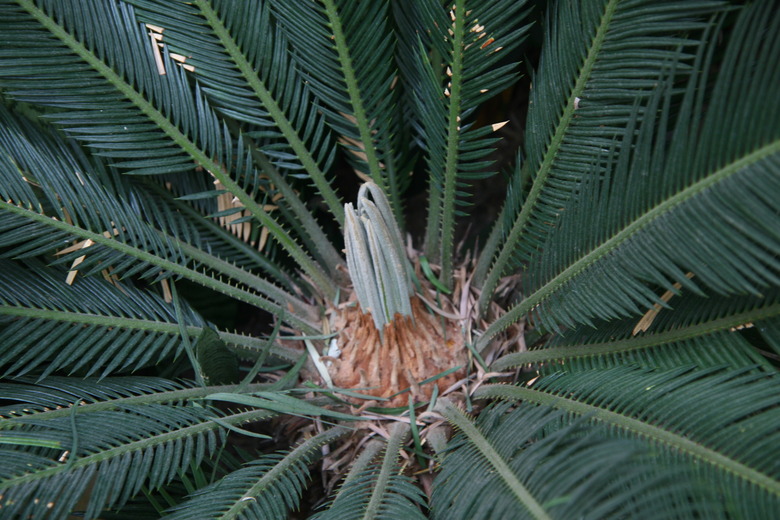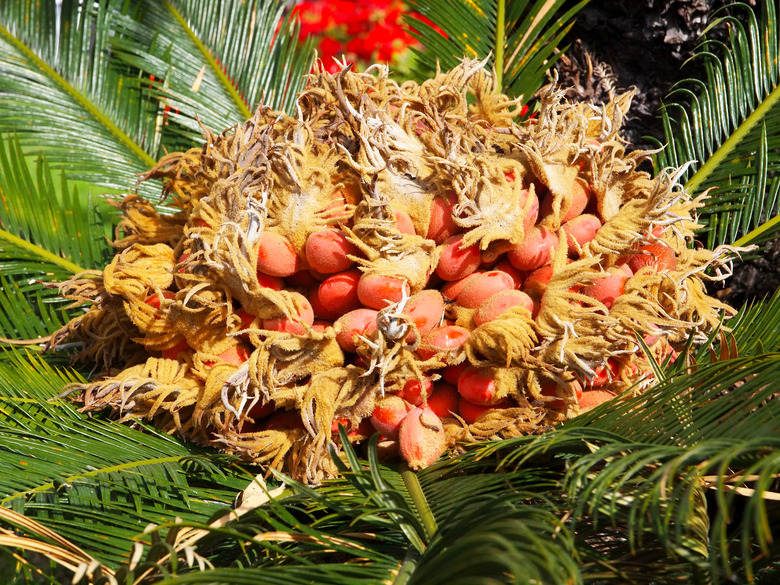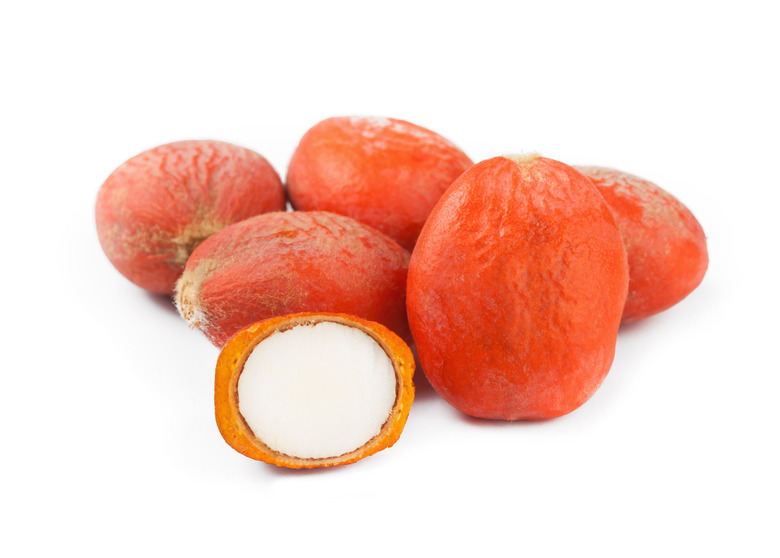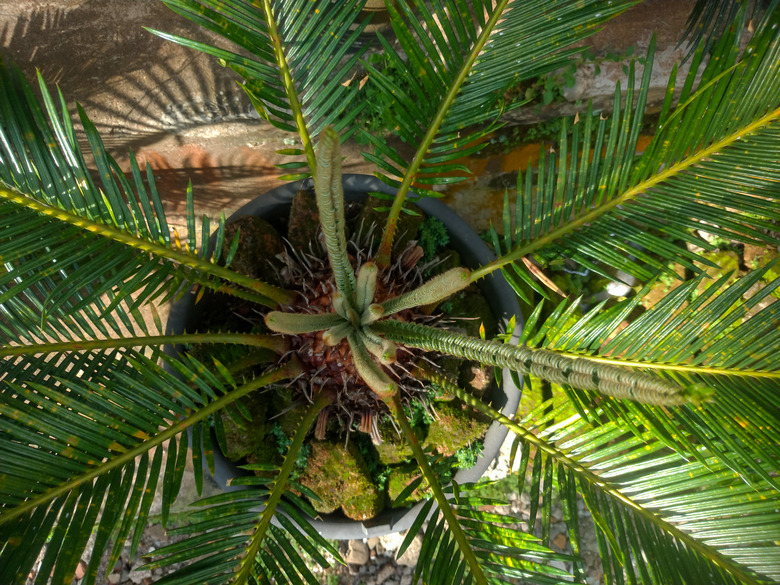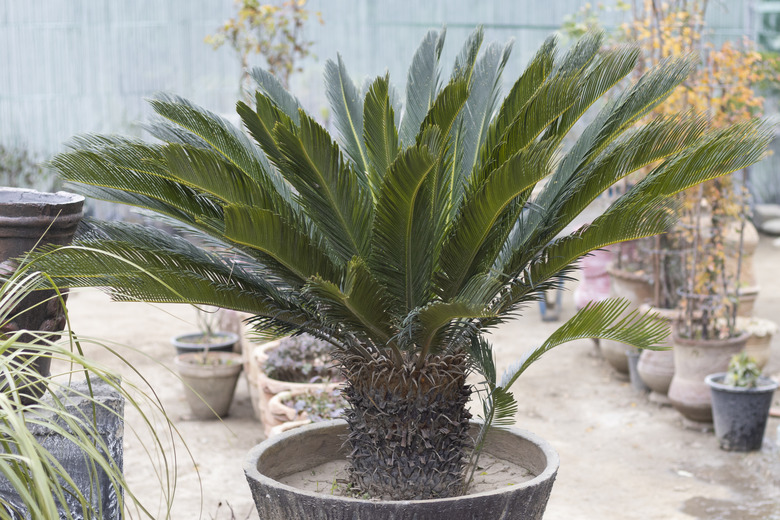How To Germinate Sago Palm Tree Seeds
Learning how to propagate sago palms at home is sometimes the only option for growing these lush, tropical shrubs, since they are often difficult to find in garden centers. Sago palms (Cycas revoluta) grow best in USDA plant hardiness zones 9a to 12b, where they are valued for their glossy, palm-like foliage and very low-maintenance care requirements.
They grow best from seed, although the seeds germinate slowly and unreliably even under ideal conditions. Growing a sago palm from seed takes patience, but it is a simple process that is suitable for beginners and advanced gardeners alike.
Warning
Wear gloves when working closely with sago palms, because all parts of the plant are highly poisonous.
Gathering Sago Palm Seeds
**Sago palm seeds form only on female plants, which produce a single large, shaggy cone at the center of the foliage in summer.** The seeds are ripe and ready for gathering in late summer or early autumn.
- Gather sago fruit in late summer or autumn when the frilly cone at the center of the sago palm is golden in color.
- Push aside the fronds to locate the fruit inside, which is tightly packed within the cone.
- Collect mature fruit that is bright orange or red in color. Do not gather yellow or green sago fruit, because the seeds inside may not be mature.
Preparing Sago Palm Seeds
Sago palm seeds germinate somewhat unreliably, but you can improve the odds of successful germination by testing the seed for viability and removing the bright red outer skin, which will help aid germination.
Testing the Seeds
Test sago palm trees for viability by soaking them in warm water for one to three days. Healthy, viable seeds are heavy and will sink to the bottom of the bowl, while dead seeds are typically light and will float to the surface. Throw away the floating seeds and keep those that sank to the bottom of the bowl.
Processing the Seeds
After soaking the seeds, remove the red outer skin. Carefully slice the skin using a utility knife that has been dipped in household disinfectant to kill off any pathogens. Do not pierce the seed too deeply; the idea is to pierce the outer skin and not the white seed coat inside.
Peel off the skin with your fingers, taking care not to puncture or tear the white seed coat. Pot the seed immediately after removing the outer skin.
Starting Sago Palm Seeds
The right growing conditions factor greatly into whether or not a sago palm seed will germinate and grow, although these seeds take a very long time to sprout even under ideal conditions.
Sowing the Seeds
- Sow sago palm seeds in nursery pots filled with sandy soil. Cactus potting mix or seed-starting compost mixed with sand at a two-to-one ratio work well.
- Set the seed on the soil surface horizontally with the pointed end facing sideways. Press the seed into the soil until it is barely covered.
- Sow one seed in each pot to provide enough space for them to grow.
Germinating the Seeds
Sago palm seeds do not need much attention during the germination process. Set the pot in a warm, bright location. The soil must be warmed to nearly 80°F to prompt germination, so you may need to set the pot on a propagation mat to keep it warm.
Check the moisture level in the soil every day and moisten it whenever it feels mostly dry below the surface.
**It can take several months for sago seeds to sprout and another three to six months before they are big enough to be transplanted into a larger container.**
Growing Sago Palm Trees
Sago palms should be grown under nursery conditions for the first few months after germination in order to encourage strong root growth, which will help them survive in the garden after they are transplanted. A sheltered location with bright, indirect light is best for the first few months after the seeds sprout.
- Provide water whenever the soil feels dry below the surface.
- Feed them with kelp emulsion diluted to half its strength once a month.
Transplant sago seedlings into a permanent pot or garden bed once they have several sets of mature leaves. Position them where they will receive filtered sunlight for four to six hours each day.
Tip
Sago palms grow very slowly and can take 50 or more years to reach a height of 10 feet.
